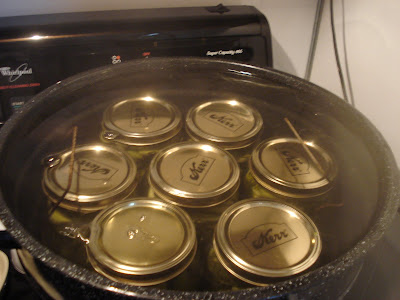
For the twelfth year running, I opened canning season on the last Saturday in August. My kitchen filled with steam, vinegar fumes, and business as a small group gathered to enact the mechanical and chemical processes--and the acrobatics of slicing and seasoning--that transform fresh cucumbers into pickles. This ancient art is no less magical for our modern understanding of the science behind it.
Pickling is the artful combination of vegetables, seasonings, and timing. Pickles might be made with one or a combination of flavor-adding preservatives: salt, sugar, vinegar, and fermentation. All pickling methods are essentially a time capsule. The spoilage of food is controlled, repurposed, and all but stopped. Families and communities have passed recipes and preserving methods down through the ages as a matter of tradition.

The science of what people are achieving, though, is brilliant in its simplicity. Long before anyone knew about microorganisms, pickling methods effectively arrested bacterial efforts to decompose food.
Let's break it down: pickling is about solutes, acids, and oxygen. Adding heavy amounts of salt or sugar will desiccate your vegetables. It does the same to many microorganisms, upsetting their chemistry and killing them. The fermenting agents that move into, say, a vat of salted cabbage will begin producing acidic byproducts. These eventually pollute the batch until it is uninhabitable for yeasts (but is sauerkraut for us). Jump-start the process by pouring on an acid like vinegar. Now even fermentation is impossible. Beneath the surface of the pickling fluid, oxygen cannot reach. Microbial life, and therefore spoilage, becomes very difficult.

Lately we've added vacuum-sealing to the mix. Pack a jar full of pickles, then cover it tightly enough to keep water out but loosely enough so air won't stay in. Put it underwater and heat it until the contents expand and the air bubbles out. As the jar cools, the vacuum inside it sucks the lid on and you have created a little microcosm of hell. Think about it: Inside the jar is an airless world of burning acid and corroding salt. No one could survive it--not even a bacterium.
As long as one is not a bacterium, though, anyone can make a pickle. It can be done with a minimum of equipment and ingredients. If you are not a canner, you could leave the jars in the refrigerator for a week or more.
Garlic Dills
1/4 bushel cucumbers*
1 bunch dill
2 heads garlic
Fresh cayenne chiles (optional)
The brine:
1 gallon water
1 quart vinegar (5% acidity)
1 cup pickling salt (buy the proper pickling kind - don't use table salt)
* Cukes must go from the vine to the vat in less than 24 hours or they will be soft and disappointing. Buy from a farmers' market and ask the vendor when they were picked!
Put the brine ingredients in a tightly covered pot to boil.
Scrub and halve or quarter the cucumbers lengthwise. Separate the garlic into cloves and peel. Wash the dill and chiles.
Wash and sterilize jars and lids.
Pack the hot jars: 2 cloves of garlic and a sprig or seed head of dill at the bottom, cucumbers and one or two chiles on top, another bit of dill, more cucumbers, and a bit of dill on top.
Slowly pour boiling brine over the cucumbers. Chase out any air bubbles with a table knife. Wipe off jar mouths with a clean cloth, cover with hot two-piece caps, and process in boiling water for 5 minutes. Set the jars on a towel and cover with another towel until cool. Test seals and refrigerate any jars that fail to seal.
Makes around 10 quarts.


